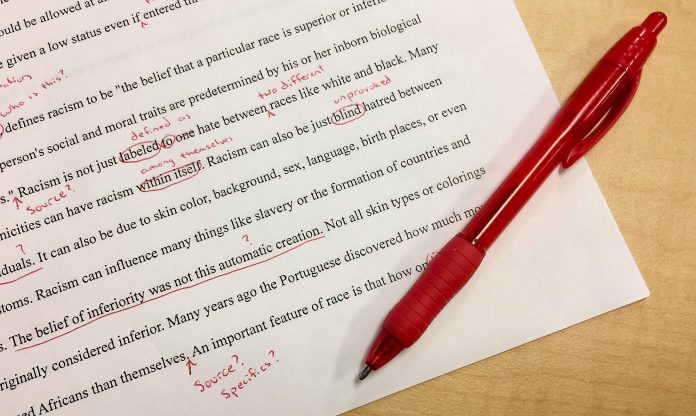
In a post on DIY MFA, Jeannette Smith addresses what an editor can actually do for you. “What is your editor doing during those weeks or months with your manuscript?” she asks. “What are they doing to earn that high fee?”
As Smith is a copy editor, she walks through that process for an average manuscript.
- Receive the Manuscript. Smith starts with a basic cleaning: formatting, replacing double spaces with single spaces, and other small changes.
- Read the Manuscript. Next, Smith reads the full manuscript without performing any edits. “If the edit is a tight turnaround, I may only read the first section of the book before diving into editing fully,” she says.
- Turn on “Track Changes.” Now Smith turns on the “track changes” function in her word processor and starts to edit. “Editors look for many things at this stage, and the order in which they search for each item could be different for each author and editor,” she explains. At this stage, Smith looks for passive voice and consistent capitalization. She also edits for sentence flow, flagging repeated sentences that start the same way or punctuation that could be better utilized.
- Make Additional Passes. Depending on the timeline and readiness of the manuscript, Smith may make two to five more passes on it, looking for different elements each time.
- Manuscript Goes Back to the Author. Now it’s the author’s turn to accept or reject any of the changes Smith has suggested.
- Final Pass & Cleanup. Once the author completes their review, Smith reads the manuscript one more time, mostly checking for errors.
Smith also discusses the skills she brings to the table. “Editing is a lot of decision-making,” she says. Editors have to balance style guides and grammar rules with exceptions and the writer’s voice. Of course, that means editors have to understand their authors. “They need to understand what the author’s intentions are behind the words and their meaning and how they are trying to get it across,” Smith explains. “We must put ourselves in the author’s shoes and think like them to do our best editing without removing what makes the writing special.”
Editors also need a good eye for detail, so they can spot places where the time of day or setting change without warning, or words that are capitalized in some places but not others. They also need to spot errors in formatting, like an italicized comma.
Like writers, editors also need a thick skin. “After all, we’ve invested into your manuscript, it can be devastating to hear an author changed back most of the edits,” Smith says. “But it happens. Editors need to be resilient to it.”











